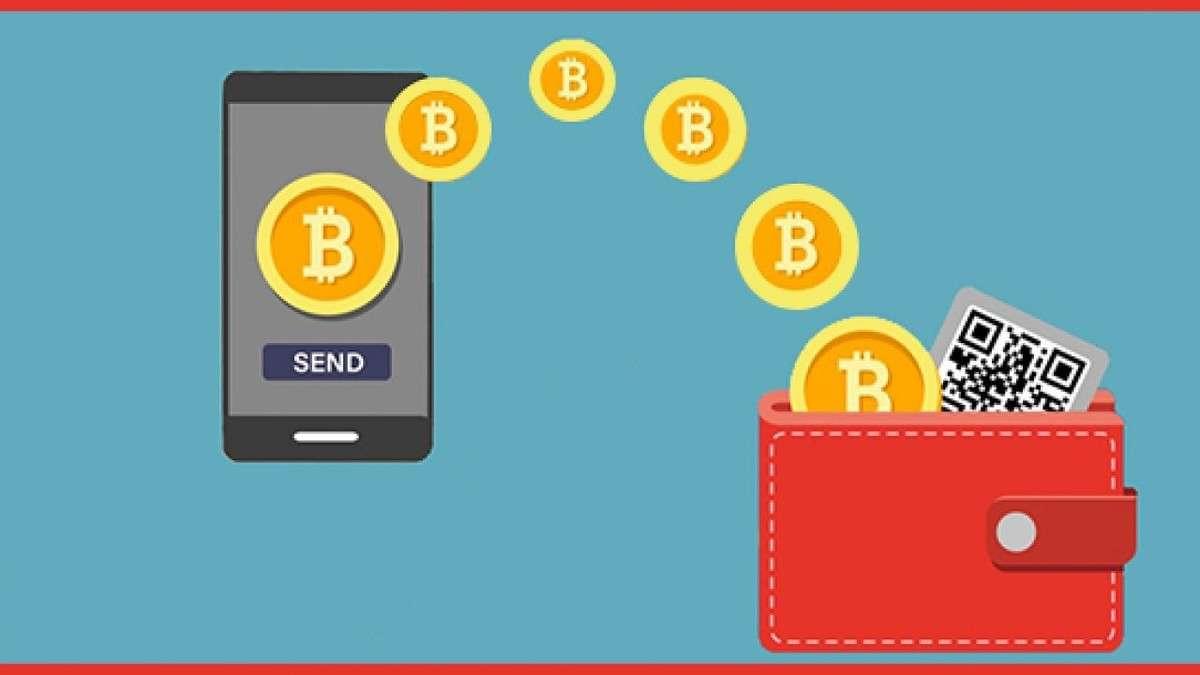Content
- Certified Blockchain Expert™ Interactive Live Training
- How to buy Solana (SOL)
- What Is Solana (SOL)? Learn About Ethereum’s Growing Rival
- Who Are The Founders of Solana? (History of Solana)
- What will Solana be worth in 2030?
- How To Use Solana?
- What are the pros and cons of Solana?
- What are the biggest benefits of Solana?
Information provided on Forbes Advisor is for educational purposes only. Your financial situation is unique and the products and services we review may not be right for your circumstances. We do not offer financial advice, advisory or brokerage services, nor do we recommend or advise individuals or to buy or sell particular stocks or securities. Performance information may have changed since the time of publication.
- This protocol uses both the proof-of-stake consensus mechanism popular with other blockchains, as well as Solana’s proof-of-history algorithm.
- Solana achieves this incredible speed by solving how the blockchain tracks time and issue timestamps – using a mechanism called “proof of history“.
- As of December, 2022, there were 21,255 GitHub developer repositories using Solana, which supports eight million active users.
- In contrast, Solana – like most popular cryptocurrencies – is not backed by any fundamental assets.
- Proof of work uses a consensus mechanism that relies upon miners to determine what the next block will be.
Its Solana price prediction for 2030 is a year-end value of $74.53, lower than its Ether forecast of $2,943 and its estimated Bitcoin rise to $55,263. With that being said, the most likely time frame for SOL to reach $500 is probably 10 years, at the earliest. At that price, the value of the entire network would total about $164 billion. In today’s digitalized world, data security has found new challenges. Well, the truth is that you should never stop looking at other financial movements.
Nodes then share the executed transactions with the other network nodes, which then check them for validity and order them in chronological order according to the timestamps. Combined with its seven other key innovations, Solana is theoretically capable of handling up to 50,000 transactions per second at a fraction of the cost. In his whitepaper published in 2017, Anatoly Yakovenko describes a novel solution to keep track https://xcritical.com/ of time between computers that don’t trust each other, which he called Proof-of-History. According to the whitepaper, this mechanism has the potential to increase the speed of blockchain networks by a thousand times or more. The architecture is censorship resistant, fast, and secure, and designed to facilitate global adoption. To keep time on the blockchain, Solana employs an innovative process known as Proof of History.
Certified Blockchain Expert™ Interactive Live Training
Based on historical figures, the solana price prediction from the crypto data provider indicated that the token could trade at around $53.72 in 2023. Its solana price prediction for 2030 saw the coin potentially climbing to $251. The PoW consensus method is somewhat sluggish, although it reduces the possibility of many validators simultaneously creating new blocks. While PoS systems are exempt from this limitation, network validators still struggle to establish the sequence of blocks as they arrive without a reliable time source. The high transaction volume made possible through Proof-of-History allows Solana to handle all the volume on a single chain. Everything from daily payments for coffee to DEX trading to NFTs marketplace transactions and metaverse data can be processed on Solana’s single mainchain.
Most of the Blockchains available in the market right now are using some version of the POS system. However, the biggest competitor for Solana is Ethereum, which is still using a POW network. But even Ethereum is in a transitional phase as it is upgrading the network to POS. To be fair, other promising Ethereum competitors, including Cardano, Polkadot, Dfinity, Terra, Polygon, and Avalanche, have also increased in price tremendously over the past year or so.
How to buy Solana (SOL)
So, it only makes sense that Solana’s fees remain much lower than the other less scaleable networks. Solana uses something called a verifiable delay function , which adds an input to each secure hashing algorithm 256 record. In simple terms, SHA256 is a standard used by most blockchain networks to keep data secured and encrypted. The token continued to trade between $11 and $15 until mid-December, after which its price dropped substantially, reaching $8.14 on 29 December 2022. Later that month, the news that the Helium protocol was to migrate to Solana on 27 March saw the price boost to $26.93 on 20 February 2023, with it trading at around $25.30 the following day.
While the entire crypto space is talking about #Solana going down again and $APE breaking #Ethereum
More people than ever before are talking about $DAG
Why
It fixes everything wrong with $ETH and does what $SOL wishes it could do pic.twitter.com/VxHPGoaaqI
— Dagnum P.I. (@Dagnum_PI) May 2, 2022
But this does not mean that Solana is not decentralized enough, as decentralization exists on a spectrum and has certain trade-offs. Depending on the use cases and security requirements, different levels of decentralization can make sense for different blockchains. In contrast, Solana – like most popular cryptocurrencies – is not backed by any fundamental assets. This decentralized setup makes the network more robust, and users can make transactions without the need of an intermediary.
What Is Solana (SOL)? Learn About Ethereum’s Growing Rival
Prior to founding Solana, the founding team had already worked together at Qualcomm for years building operating systems for the first smartphones. There, Solana co-founder Anatoly Yakovenko has mainly worked on solutions for synchronizing computers in a network. If optimistic traders evaporate, cryptocurrency has nothing to buoy it. It’s a key distinction that keeps many investors, including the legendary Warren Buffett, away from cryptocurrency.
Even with powerful computers, these steps can only be sped up by approximately 30%. Presenting the result of a VDF, therefore, proves that a minimum amount of time has passed and allows to chronologically order all the VDFs outcomes. Bankrate.com is an independent, advertising-supported publisher and comparison service. We are compensated in exchange for placement of sponsored products and, services, or by you clicking on certain links posted on our site. Therefore, this compensation may impact how, where and in what order products appear within listing categories, except where prohibited by law for our mortgage, home equity and other home lending products.
Solana is a cryptocurrency that was designed to work similarly to and improve upon Ethereum. Named after a small Southern Californian coastal city, Solana is the brainchild of software developer Anatoly Yakovenko. Investopedia requires writers to use primary sources to support their work.
Who Are The Founders of Solana? (History of Solana)
The network periodically samples the number and SHA-256 hashes, providing real-time data according to the set of hashes included on central processing units. PoH relies on PoS using the Tower Byzantine fault tolerance algorithm, an optimized version of the practical Byzantine fault tolerance protocol. The Tower BFT keeps the network secure and running and acts as an additional tool to validate transactions.
While we strive to provide a wide range offers, Bankrate does not include information about every financial or credit product or service. Anyone can run a validator node and read the “Running a Validator” information on Solana’s documentation website for help and advice on getting started. Unlike most crypto projects, there is no minimum stake required to be a validator on the network. Solana’s highly performant system architecture could attract a range of apps and businesses, and as the ecosystem expands, the project and its SOL token could become increasingly valuable in the future. Buying and selling SOL, or trading it for any other cryptocurrency, is done in mere moments when you choose our secure platform as your storage solution. Kriptomat offers a secure storage solution, allowing you to both store and trade your SOL tokens without hassle.
One such bridge is Wormhole, though you will be charged fees for this conversion, and using a bridge is not without risk — if anything goes wrong during the transfer, you could lose your funds. Someone who has participated in the Solana ICO (initial coin offering — a way to crowdfund a project by selling project tokens) was able to buy SOL for $0.22. This what is solana crypto isn’t uncommon for blockchain projects, nearly all of which are experimental in at least some regards. But it’s worth noting that a project is in beta if you’re going to invest, or build an app on the platform. Both PoW and PoS mechanisms reward validators or miners for their efforts; Bitcoin miners get BTC, and on Solana, validators are rewarded in SOL.
What will Solana be worth in 2030?
But in recent days, as the rest of the crypto world has been relatively quiet and prices stable, Solana has plummeted further. Decentralized networks have solved this problem with trusted, centralized timing solutions. For example, Google’s Spanner uses synchronized atomic clocks between its data centers. Google’s engineers synchronize these clocks to a very high precision and constantly maintain them.
Founded in 2017, it is an open-source project currently run by Solana Foundation based in Geneva, while the blockchain was built by San Francisco-based Solana Labs. Developers raved about Solana’s support for smart contracts, pieces of code that execute pre-programmed directives, as well as an innovative proof-of-history consensus mechanism. Conversion rates are based on CoinDesk’s Bitcoin Price Index and the price indices of other digital assets. World currency prices are based on rates obtained via Open Exchange Rates. There is another way to get this done and it is by making the nodes of the validator stake something valuable.
If you would like to know where to buy Solana, SOL tokens can be purchased on most exchanges. The top cryptocurrency exchanges for trading in Solana are Binance, Coinbase, KuCoin, Huobi, FTX and others. Solana blockchain was rolled out during the 2017 initial coin offering boom. The project’s internal testnet was released in 2018, followed by multiple testnet phases leading to the eventual official launch of the main network in 2020.
How To Use Solana?
In contrast to other smart contract blockchains like Polkadot and Ethereum, Solana has purposefully decided against a sharding model. In its worldview, sharding — that means running multiple blockchains in parallel to increase transaction throughput — slows down a network because all of these chains have to communicate with each other. Solana is a programmable smart-contract blockchain that aims to achieve high transaction throughput without sacrificing decentralization. It is a direct competitor to Ethereum, and will be even more so once Ethereum has completed its merge and switched to Proof-of-Stake.
Examples of Solana-based DEXs include Orca, and Serum, which allow users to trade cryptocurrencies in a non-custodial process. Solana is also the backbone of stablecoins like Saber which give users a liquid option for cross-cryptocurrency margin trading. Solana has a layered architecture that makes it interoperable with other applications and blockchains for managing and trading digital assets, like cryptocurrencies, NFTs, or personalized records. Solana is designed to curb blockchain censorship through its rotating validator nodes. For each validator, smart algorithms calculate the minimum number of nodes needed to be compromised to censor the network.
PoH time stamps each block as it is created, thus increasing the efficiency of the block by allowing it to verify transactions faster. Solana uses a “proof of stake” system to verify transactions, manage its coin supply and create new coins. To participate in a proof of stake system, you need to own the cryptocurrency but then you can earn rewards for helping to operate the system. By staking tokens with a validator, you’re putting trust in the validator to authorize transactions. However, as with other proof of stake systems, stakers can lose money if validated transactions don’t meet the system’s rules.

